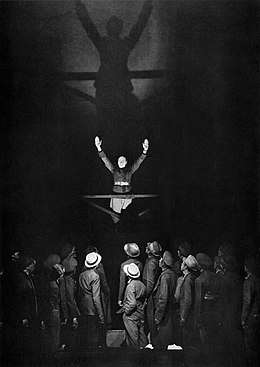Subtext
Subtext is any content of a creative work which is not announced explicitly by the characters or author, but is implicit or becomes something understood by the observer of the work as the production unfolds. Subtext has been used historically to imply controversial subjects without drawing the attention, or wrath, of censors. This has been especially true in comedy, but it is also common in science fiction, where it can be easier and safer to make social critiques if it is set in a time other than the (author's) present.

Definition
Subtext is content "under", and hence, "sub", or hidden beneath, the actual dialog or text. To gather subtext the audience must "read between the lines". This is crucial to a clear and accurate understanding of the word. If it is stated explicitly, it is by definition not subtext, because it is no longer hidden. In fact, writers are often criticized for the failure to artfully create and use subtext. Such writing is faulted for being too "on the nose", meaning the characters always mean what they actually say. Among other things, this robs the text of dramatic tension and can make the whole thing too boring and obvious. [2]
Subtext is often also inserted in narratives where explicit themes are unable to be shown or expressed due to the desire to appeal to a general audience. Examples are sexual or other adult references in a story nominally marketed to children. Their inclusion sails right over the kid's heads but the adults appreciate a chuckling nod to the fact that they too are in the audience.
Subtext is not costumes, set pieces, or design, although these cultural cues may 'set the table' for the understanding and interpretation of the subtext.
See also
| Look up subtext in Wiktionary, the free dictionary. |
| Wikiquote has quotations related to: Subtext |
- Concision
- Connotation – Cultural or emotional association that some word or phrase carries, in addition to the word's or phrase's explicit or literal meaning
- Dramatic irony
- Exformation
- Iceberg theory
- Innuendo
- Implication
- Meta-communication
- Pragmatics – Branch of linguistics and semiotics relating context to meaning
- Speech act – Utterance that serves a performative function
- Steganography – Art and science of writing hidden messages
References
- Lattanzio, Ryan (2014). "Orson Welles' World, And We're Just Living in It: A Conversation With Norman Lloyd". EatDrinkFilms.com.
- Seger, Linda (November 1, 2011). "Chapter 1: Subtext: Definition and Exploration". Writing Subtext. Studio City,CA: Michael Wiese Production. ISBN 978-1-932907-96-4.